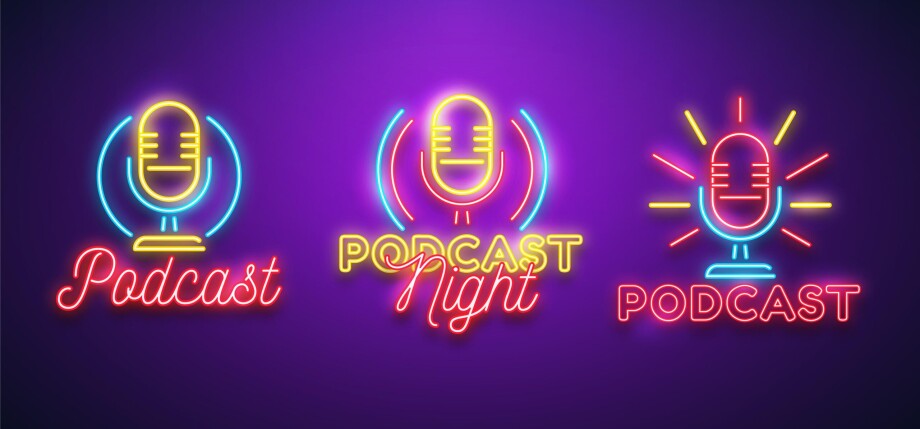Podcasts are very useful when it comes to learning a language. First, they provide students with tons of real-life English as most of them are authentic. Second, you can easily find something that will interest any learner — podcasts are all the rage now and come on a wide variety of topics. Also, they are just great for developing listening skills. Still not convinced? Think about different accents to bring to your classroom, topicality, and an opportunity to download, slow down, speed up, and share podcasts in a matter of seconds. Sounds great, doesn’t it? In today’s article, we’ll talk about the ways of using podcasts with our students and some important moments to consider beforehand.
If you have never used podcasts with your students before, it requires some preparation like every new activity. You’ll need to think of certain strategies and answer a number of questions. Generally, the best way to get students listening to podcasts is to make sure they are enjoyable, doable, and meaningful. Here are some main tips to bear in mind:
Opt for exciting
Since podcasts are usually used as supplementary materials, it is always better to pick something that can engage your student rather than another coursebook-related topic of space exploration. While googling, specify the age group and the topic. This way, you are more likely to find something that your students will appreciate. For example, here is the list of really nice podcasts for teens, and here you might find good ones for younger kids. For Upper-Intermediate level and above, you can even ask students to find and listen to an interesting podcast on the topic you are working with. If you teach a group, a great discussion next lesson is guaranteed!
Decide where to use it
A lot of teachers ask students to listen to podcasts at home, especially if the level of students is high enough. It is a good way of adding authenticity to the learning process. Also, it develops students’ autonomy because some people might find it interesting and go on to find new episodes. However, podcasts can be used in class too. Opt for this way if your aim is to draw learners’ attention to new vocabulary, to use listening as a springboard for whole-class discussion, or to practise listening for gist and specific information in a controlled way.
Choose optimal length
Podcasts are great, but some of them are so long that our students face a massive challenge. Most of us are distracted easily and have a quite short attention span. Also, we often need visual support, which podcasts cannot give us. So, opt for some shorter pieces. ‘6 Minute English’ by the BBC can work out just fine to introduce your students to the world of podcasts. But what if you have found something amazing like one of ‘The Why Factor’ episodes which lasts for 25 minutes? Find the answer below!
Break it
It might be a good idea to break a longer podcast into pieces if it suits the focus of your lesson perfectly. If you have a 1-hour long episode of ‘Luke’s English’, you just can’t have it all! What to do then?
- Play the introductory part as a lead-in. Ask students to discuss what they’ve heard. Then, play each part followed by exercises separately. Most likely, you will have to design the exercises yourself. There may be classical listening for gist and listening for detail questions, gap fills, or multiple-choice questions.
- Select the key part and ignore the rest of the podcast. This might be beneficial for lower-level students because it will give them a proper amount of challenge but won’t be overwhelming or discouraging. Pre-teach any material which is likely to inhibit the meaning.
- Play the beginning of the podcast in class, save the rest of it for homework. Stick to the reasonable length, though. This will work better with the levels starting from Intermediate.
Support learners
Let’s face it — listening to podcasts can be hard. If you want it to be productive, you’ll need to think of the ways to provide scaffolding. Scaffolding is the temporary support that teachers give to learners to help them to do a task, solve a problem, communicate or understand. Here are some ideas:
- Create a glossary with the keywords or phrases from the podcast. You can provide words with definitions or even opt for translating some of them.
- Add visuals. It is proved that we process and understand spoken foreign language better when we have some ‘environmental clues’ — pictures, photos, maps or mindmaps, and so on. Also, visuals can prepare learners for listening or help them remember the main moment of the podcast after.
- Provide the tapescript of the whole thing or some parts, depending on the level and needs of your students.
- Write and print out the summary. This way, it will be easier for your learners to concentrate as they will know the main ideas already.
Do it yourself
While we can trust the educational content of podcasts specially designed for learners of English, authentic materials can be unpredictable. They may unexpectedly bring up the subjects you don’t want to discuss in class or even contain some inappropriate bits of language. As not every podcast goes with the tapescripts, listening to the whole thing can be time-consuming, but it will save you from potentially embarrassing situations. What’s more, you’ll have to listen to it anyway to design exercises.
All in all, podcasts are a gold mine for those who want to have fun and improve English skills. They represent a never-ending source of authentic materials. They’re accessible, convenient, and mostly free of charge. What’s more, quite a lot of people nowadays listen to podcasts in their mother tongue, so they are familiar with the format. Give it a go with your students!
Do you have any favourite podcasts to listen to with your students — or by yourself?
Speaking activities are, obviously, essential for English language speaking classes. A lot of students join classes particularly to develop their communicative competence, become more fluent, versatile, adaptable, and confident communicators in English. However, designing speaking activities might be time-consuming and nerve-wracking for any teacher. We have prepared a memo with superb ready-made speaking tasks that will make your student talking. Download it here.






 Диляра Биктагирова
Диляра Биктагирова 
 Анна Тетерина
Анна Тетерина 
 Маргарита Аветисян
Маргарита Аветисян 
 Анастасия Юферева
Анастасия Юферева 
 Skyteach
Skyteach 